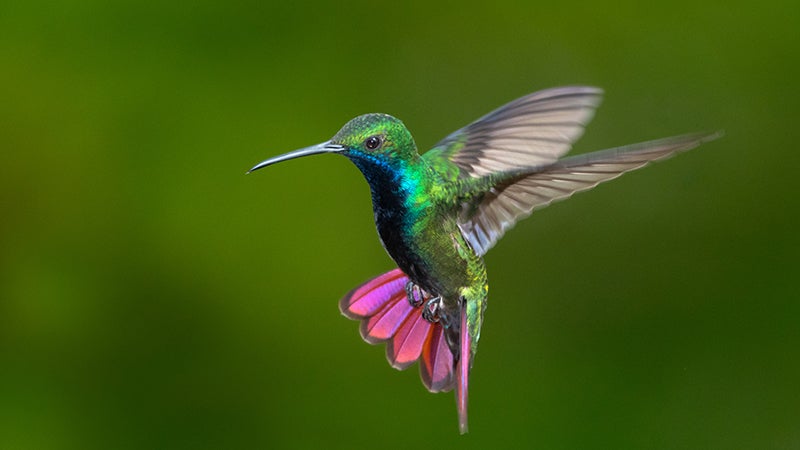Hummingbirds are effective, attractive pollinators
Published 6:08 pm Friday, April 26, 2019

- A Black-throated Mango hummingbird hovers in the air.
|
Getting your Trinity Audio player ready...
|
Kristi Hendricks
Southside spring is humming along, especially now with the hummingbirds’ auspicious return to the landscape. Invite these flying fireworks of iridescent emerald jewelry to visit every nectar-rich tubular flower in your garden. Of benefit to us all, hummingbirds are effective pollinators to a great number of forbs, shrubs and trees.
Male hummingbirds may steal the show with their ruby-colored throats, fierce fighting tactics and daring U-shaped dances to attract female partners. But it is the more gracious females with their green backs, white underparts (including throat area) and black eye masks that capture your heart.
Hummingbirds are constantly burning energy with their zip-zoom acrobatics. So much so, that they may eat up to three times their body weight in a single day to support this active lifestyle. Each bird is said to visit hundreds of flowers daily.
It’s a notable day when a hummingbird selects your habitat to visit. You can often hear the hum of their wings before you catch sight of this itsy-bitsy bird. If you want a closer look, wear a bright red T-shirt to work in your flower beds and watch their benign yet in-your-face approach.
Providing a sugar-water feeder (using a 4-1 uncolored water to table sugar ratio) is a quick way to bring them to your homestead. Yet, the more natural and easily sustainable way to attract hummingbirds is to install nectar plants that will cater to their sweet tooth all season long.
There are countless plants both native and introduced that support hummingbirds. Blooming now are Virginia bluebells, verbena and bleeding hearts. Soon, the lovely blooms of hollyhocks, wild columbine and foxgloves will capture their attention. And when summer nears, purple coneflowers, salvia and liatris will catch their eye.
Ruby-throated hummingbirds also require protein. Small pesky insects hiding out in your garden such as gnats and mosquitoes fill this dietary requirement. And humming birds like a regular bath after a hard day of collecting, so include the cup plant in your inventory to catch rainwater for their splashing delight.
Although hummingbirds have just arrived, establish now those late summer bloomers such as aster, gaura and lantana to support their nutritional needs during the inevitable fall migration. Males depart the area first; females may linger into September.
To assist you with creating an inviting habitat, look to VCE online publication HORT-59.
Hummingbird attractor plant selections will be available at the WTMG’s 3rd Annual Plant Sale on Saturday, May 4, from 9 a.m. to 1 p.m. Rain date is Sunday, May 5. The sale will be held in the “Learning Garden” of the Carrollton Branch, Blackwater Regional Library, located at 14362 New Towne Haven Lane. Master Gardener volunteers will be available for free consult.
KRISTI HENDRICKS is a member of the Western Tidewater Master Gardeners. Contact her at gardenonthejames@yahoo.com.

